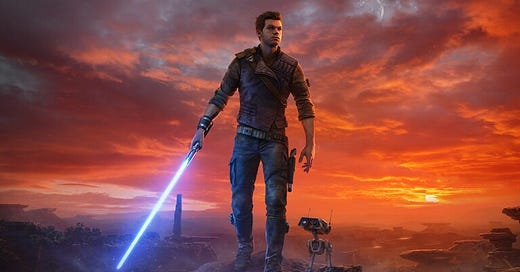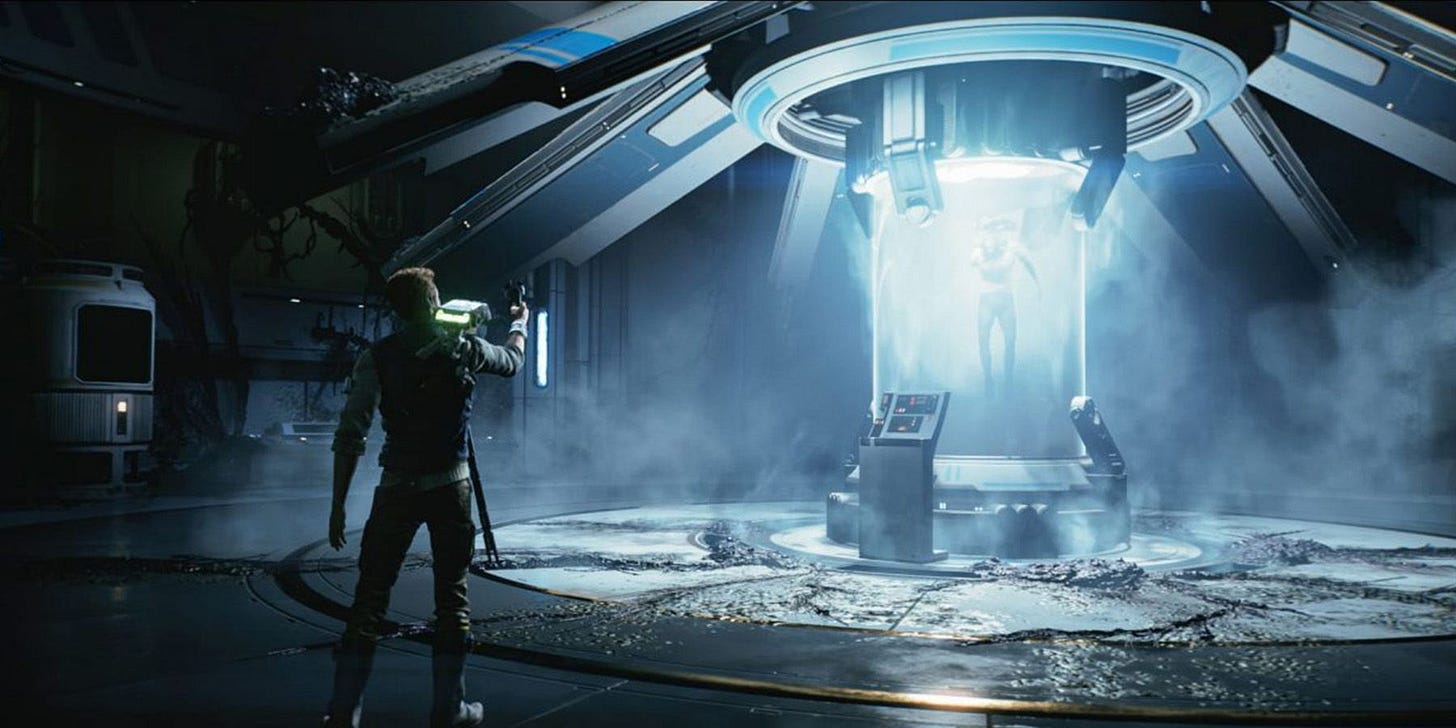Human Lens #97: 'Star Wars Jedi: Survivor' Review
You can now embrace the power of a Jedi Knight in a masterful game
Back in 2019, after a long break from Star Wars video games other than the Battlefront series, with the debacle of Battlefront II still resonating at the front of some players minds, Respawn Entertainment released Star Wars Jedi: Fallen Order to a litany of positive responses. Taking notes from the Souls and God of War franchise, the game combined complicated fight mechanics with platforming and traversal to make a unique experience that made you truly feel in control of a Jedi. After a long wait, the sequel, Star Wars Jedi: Survivor, has finally arrived, bringing back Cal Kestis and the crew of the Mantis for a new adventure against the Empire for the future of the Force.
Five years removed from the events of the first game, Cal Kestis is now a young man who, with more confidence in his abilities, continues to take the fight against the tyranny of the Empire. With the growing realization that his actions are going nowhere, Cal stumbles upon a secret that could guarantee the safety and prosperity of those he cares for, as well as those forced to flee, from the Empire. With that discovery, Cal will be forced to confront how the wrong choices could lead him down the wrong path and how the differences between good and evil are never as black and white as everyone is lead to believe.
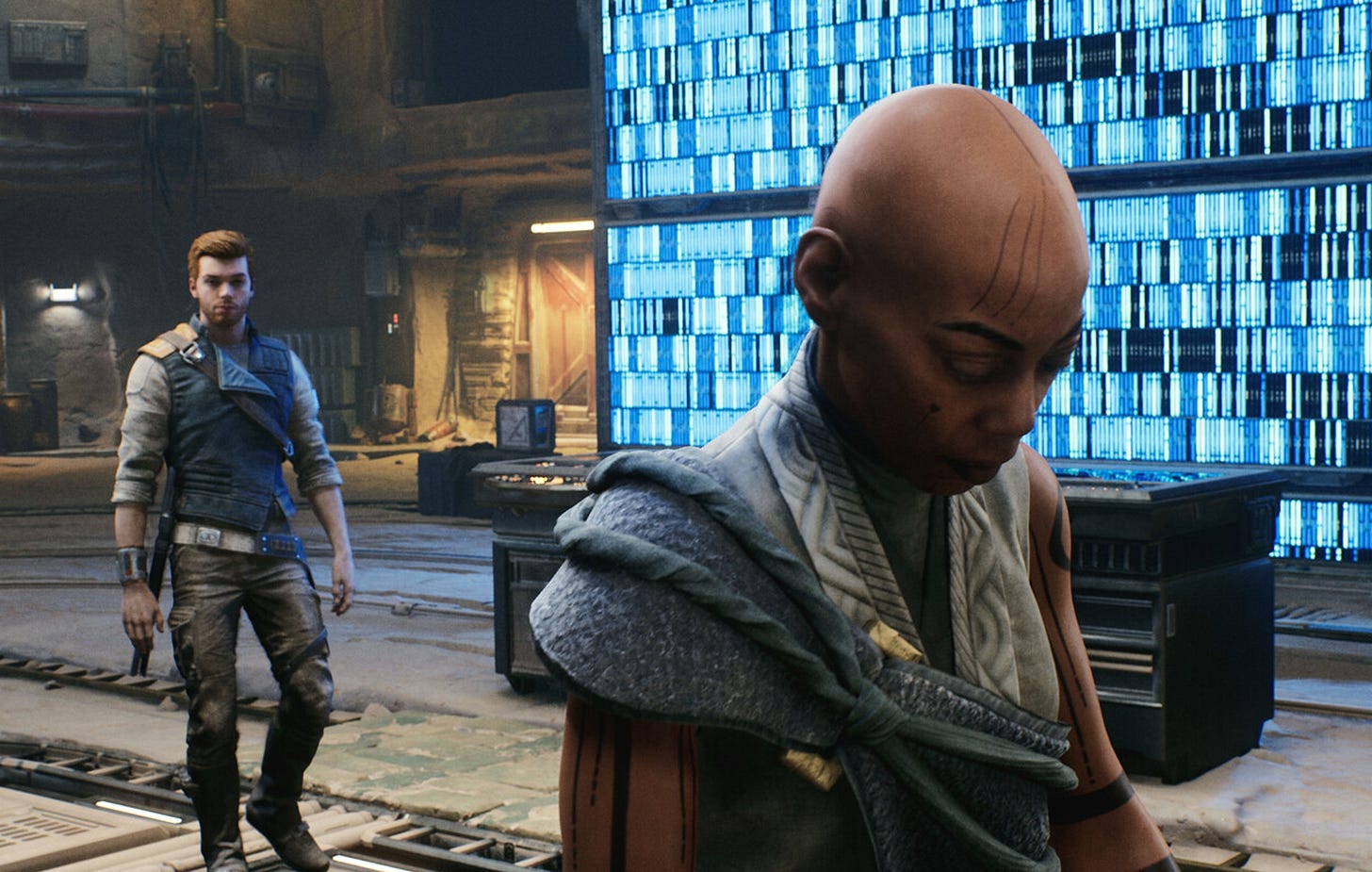
While the stakes aren’t as high as the first game, they present a higher personal struggle for our main cast of characters, who are all returning from the first. In analyzing what being a survivor means, the writing team decides to look at how the Jedi code can, and maybe should, be reinterpreted now that the Order is gone. While looking out for others has always been a theme of Star Wars, it’s ok to act out of self interest in the name of love. Now you may be questioning how I came to that conclusion. Did I totally miss Anakin Skywalker’s love blinding him and leading him onto his path to becoming Darth Vader? But there’s one key difference between Anakin and Cal Kestis that sets their stories, and the lessons learned from them, apart.
Jedi: Survivor, above anything else, is about the differences between passion and obsession. I’m avoiding spoiling who the antagonist is, but I will say that they are the polar opposite of Cal. Even though their actions were in the name of their peers and the future of the Jedi Order, their drive for answers, power, and tranquility lead to an obsession that divided them and drove them to violence. In fighting the Empire, Cal is trying to make a better galaxy for the future of everyone, mirroring the antagonist. But Cal’s defining trait is that he is aware of the potential to fall to the dark side, having born witness to a lost Jedi in the first game. The first step of avoiding falling to the dark is accepting that it’s a possibility and telling it that it can’t have you — that worry means you have the strength to overcome it. The second step is relying on those around you to not only be self reliant and capable, but to have trust in them to hear out your concerns and help you out of dark times. Circling back to Anakin, his inability to do either of these things, as well as his inner circle being gone when he needed them most, lead to his secret breaking him down to the point of evil.

What excites me most about the story of the game is its exploration of the High Republic era on a screen. Introduced in January 2021 in Charles Soule’s Light of the Jedi, which I wrote about early in my Substack career here, the new era in the Star Wars universe has been built out by a brilliant publishing team, crafting some of my favorite stories to the franchise. The High Republic traverses a time period that is anywhere between 100-500 years before the events of A New Hope, placing it well before the events in the prequels. It was a time of prosperity and expansion for the Jedi, with so many new characters complimenting an era of when the Jedi were at the peak of their power.

With the main story being heavily effected by a certain character from the High Republic and their actions, I hope it intrigues players to take a look at that period and dip their toe into the publishing side of the universe. Because a lot of the material in the game is new, the books will provide a wholly original story for those inspired to pick it up after playing this, covering some of the events and people that are teased in this game. It doesn’t make or break your experience either way, but playing the game after reading the books is very rewarding and enticing.
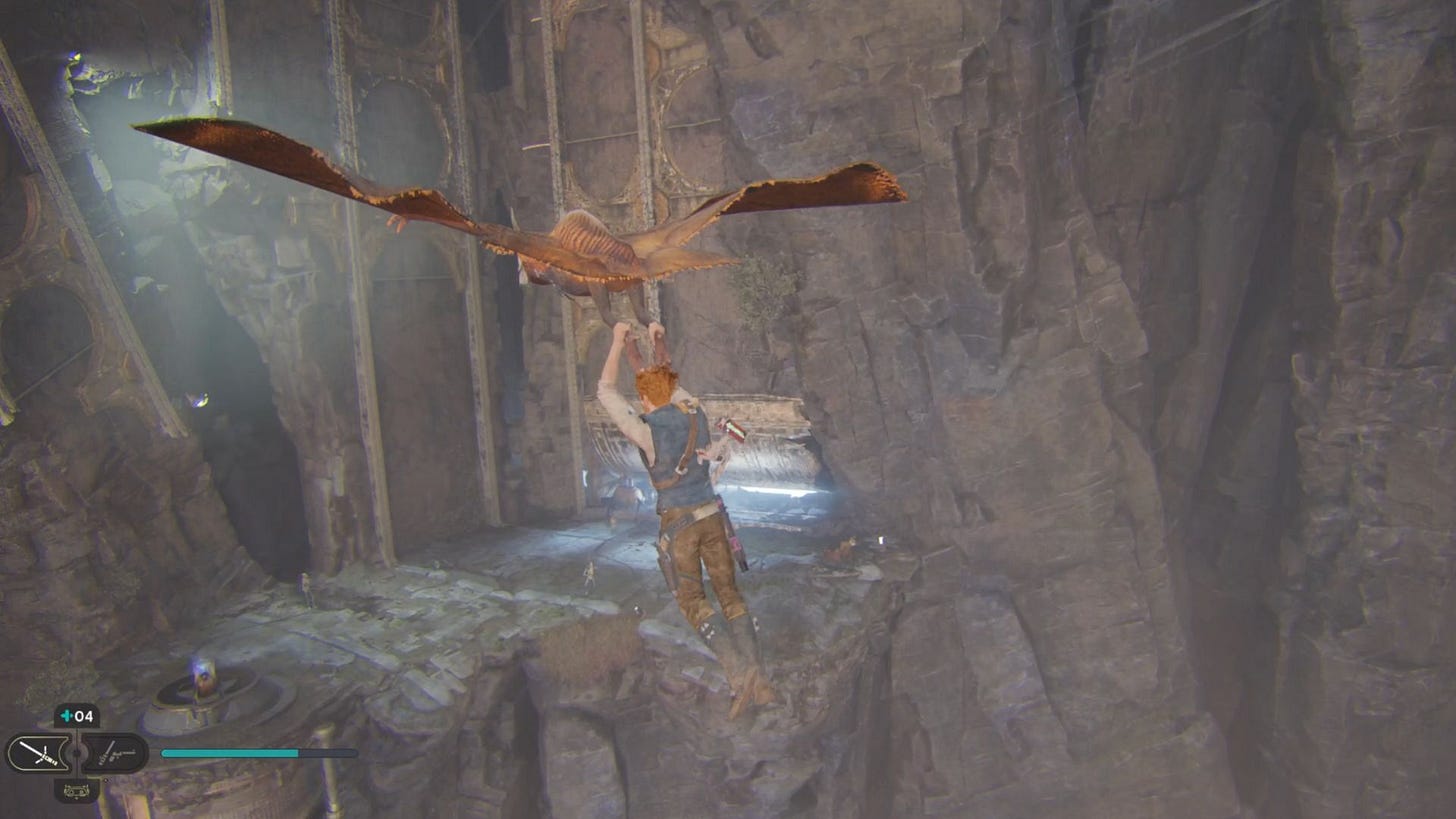
While most sequels to games will remove some abilities achieved from the first, having them be re-acquirable or replacing them with new ones for the player to use, Jedi: Survivor gives you the agility, combat expertise, and force attunement that a fully grown Jedi Knight should have. The player has the ability to be absolutely dominant from the moment they can take control as Cal for the first time. Because of this reliance on the player to rediscover what could be done at the end of the first game, it opens up the possibility of so much more gameplay possibilities.
Force mechanics delve into more diverse traversal; making for more complicated platforming that involves grappling hooks, double jumps, and forward boosts — all required to be used in tandem with level designs that are more complicated and taxing on the player than the first game. When it comes to lightsabers, the first game supplied the single blade and, eventually, the double bladed laser swords. Now, there are five total ‘stances’ that include the single blade and double blade, but now add the single blade with a blaster, the dual wield, and the cross guard, all interchangeable and upgradable. Mastering one of them is fun, but getting comfortable with all of them allows the player to approach different scenarios and bosses with different styles of play that will improve how easily a scenario can be handled.
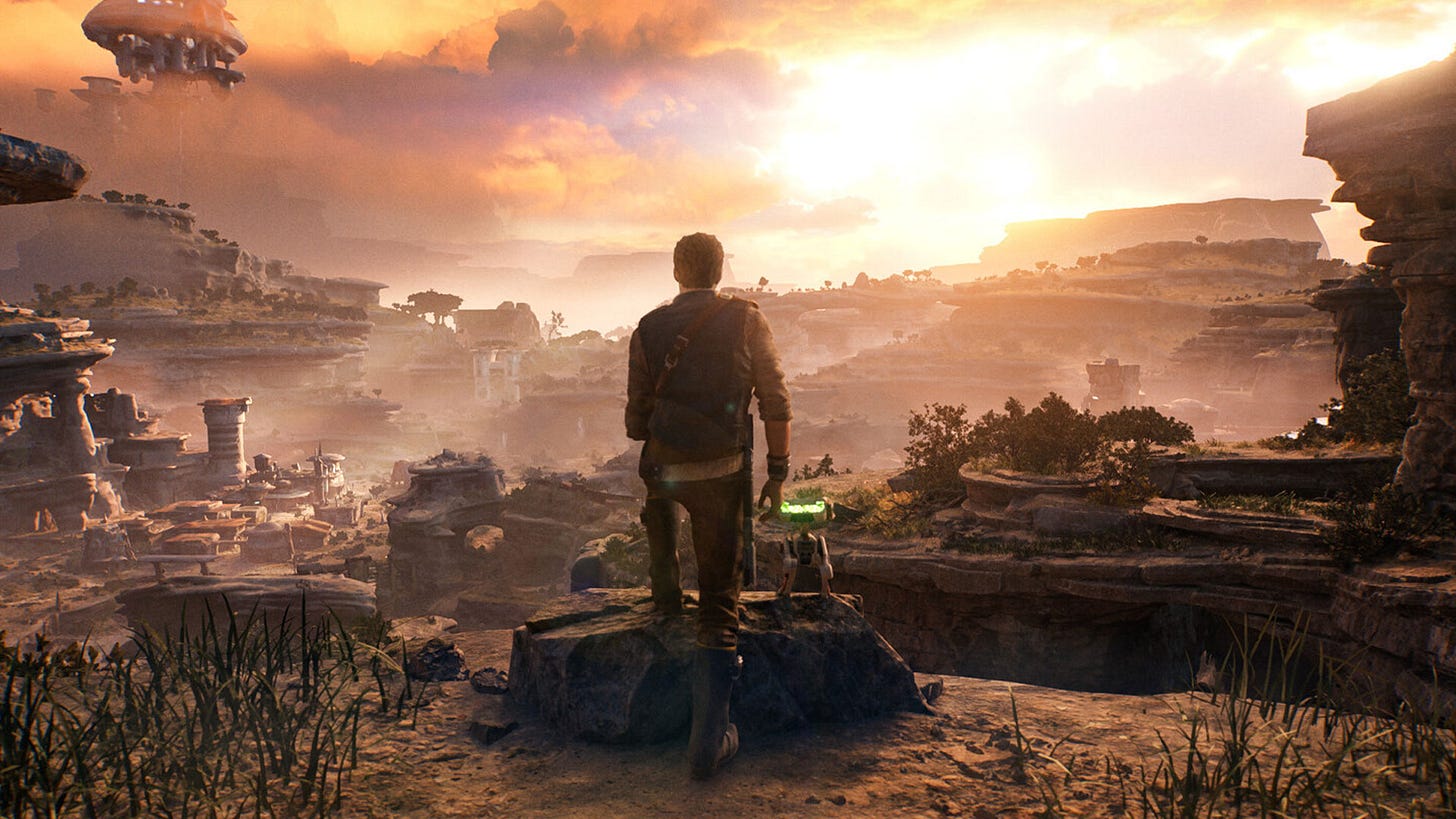
Sequels tend to always go bigger, and Jedi: Survivor didn’t look to be the exception. The base world of Koboh might be as big as all the maps in the first game combined, and then there’s a moon that’s fully explorable on top of that, plus Jedha and Coruscant. While I wish there was a little bit more variety and planets to go to, as a fan of a lot of planet hopping in my Star Wars, I can’t complain at the vastness of the maps and how much there is to do in them. Characters to talk to and observe now populate the areas after a first game that mostly saw Cal traversing abandoned areas. With these new characters comes a diverse group of aliens and quests that continually see you naturally straying off the path of the main campaign and checking things out or doing favors for your new friends. These added adventures and sections to the planets make it far more appealing to continue playing the game once the main story is done. When the campaign is over in the first one, there’s not enough reward or intrigue to bring you back. I easily surpassed my hours in the new game compared to the first because of the enticing world that the developers were able to build for players to explore.
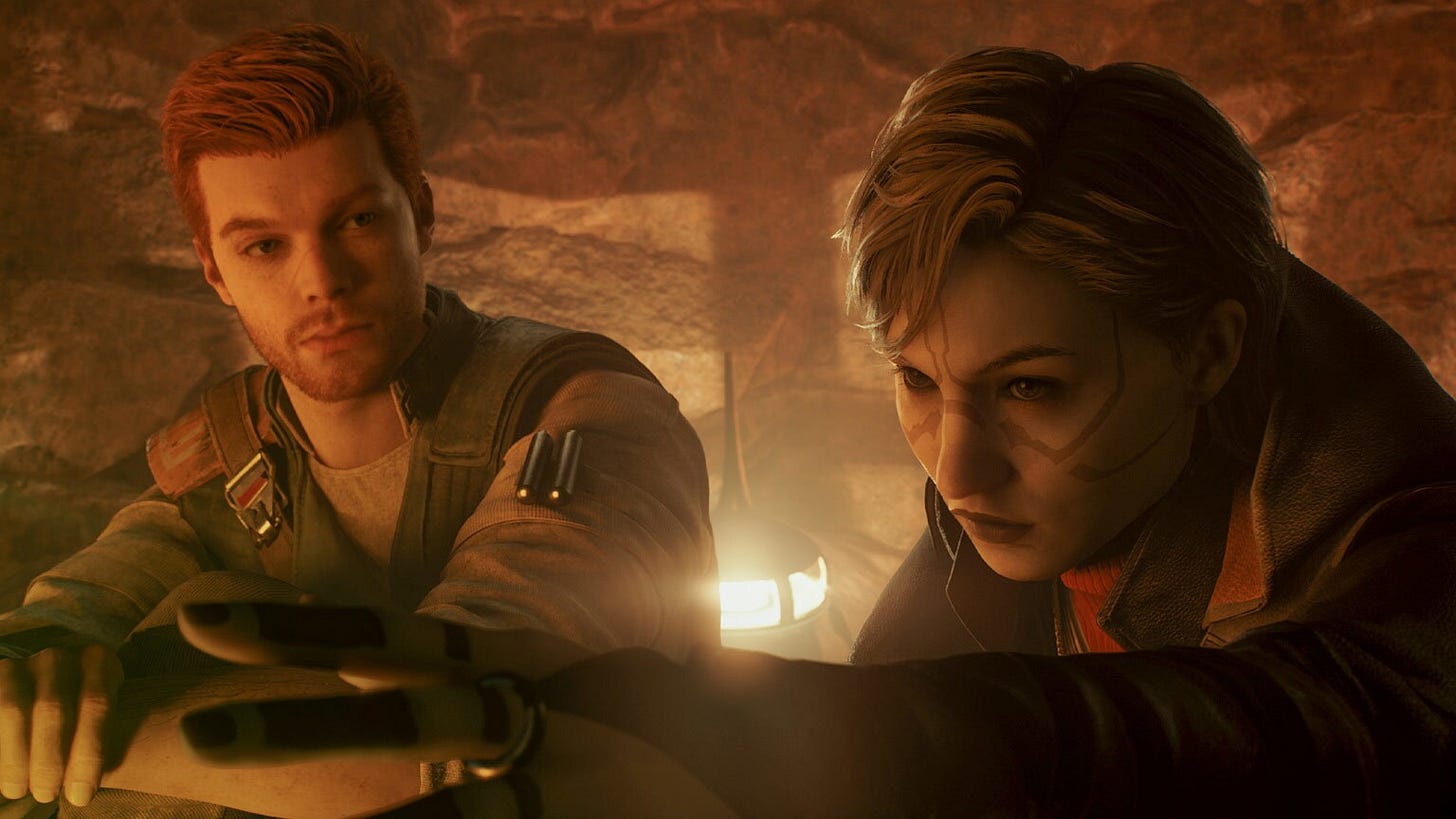
Star Wars Jedi: Survivor contains a one of the greatest action set pieces in Star Wars history, expands on all the characters from the first game in emotional and surprising ways, and transitions Cal Kestis into one of the greatest Jedi of all time. It’s a story of passions vs. obsessions, taking chances, and going through life with love and care in your heart. The first game was already a great Star Wars story, but this is one of the best — its status as such only getting boosted by the fact that it’s one of the greatest all around video games of the last couple of years. If you haven’t gotten it yet, go get this game right now. And if you’re not a gamer, look it up online and watch it, because the story is well worth the time of any Star Wars fan.

